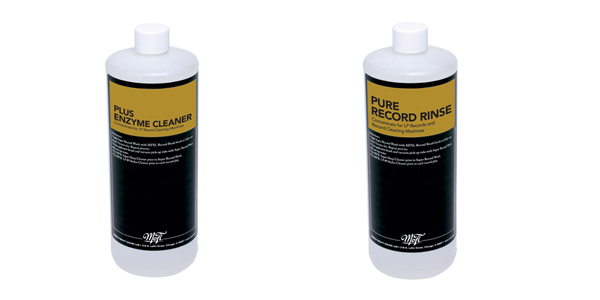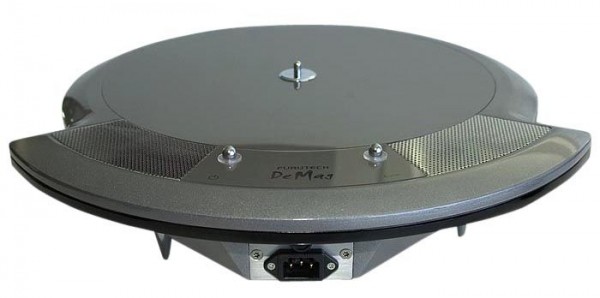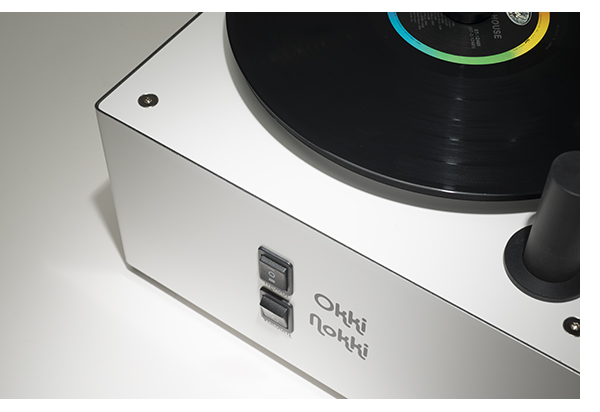 Vinyl lovers spend a lot of money on tonearms, cartridges, and phono stages in the effort to pull the most sound from the record grooves. However, none of these audio components can deliver their maximum performance if the record itself is a limiting factor.
Vinyl lovers spend a lot of money on tonearms, cartridges, and phono stages in the effort to pull the most sound from the record grooves. However, none of these audio components can deliver their maximum performance if the record itself is a limiting factor.
Minute particles in the grooves of dirty records can diminish sonic quality, adding unwanted pops, snaps, and surface noise to the music. Even new, seemingly clean records are hampered by debris left over from the pressing process. Yes, simple record cleaning brushes can help this problem, but if the brush itself is not completely clean, it can introduce new debris – or worse – grind it back into the delicate record grooves. But nothing beats a good wet cleaning for the best possible result.
Based in The Netherlands, and imported by VANA Ltd in the USA, the team at Okki Nokki addresses this ongoing problem with their newly updated RCM-II record cleaning machine. Designed to loosen and suck out any grime present on the record surface, rather than simply re-distributing it, the Okki Nokki simplifies the cleaning process as much as possible.
The Okki Nokki package contains everything needed to start cleaning records within minutes. The main cleaning unit, which holds the platter and vacuum motor, a bottle of cleaning fluid concentrate, vacuum wand, and a cleaning brush. The team at Okki Nokki also includes an instruction booklet and links to an online video to demonstrate proper usage. The recommended clear acrylic dustcover is available separately for $50.00
The 50ml of cleaning concentrate is formulated for dilution into a liter (roughly a quart) of water. I find a pair of narrow-tipped, refillable mustard or ketchup squeeze bottles – like those you might see in a diner — serve very well for fluid dispensing and storage. If you chose to go this route; make sure to label the bottles. I don’t think this solution would be appetizing on French fries.
With fresh cleaning solution at the ready, place a record onto the Okki Nokki platter, clamping it down with the included aluminum record clamp. After flicking on the switch for clockwise rotation, about a tablespoon of cleaning solution should be dribbled onto the record. Applying the record brush against the vinyl surface evenly distributes the cleaning solution, starting the process simultaneously. After about five rotations, switch into counterclockwise motion for a few rotations, offering extra thoroughness in loosening any stray particles.
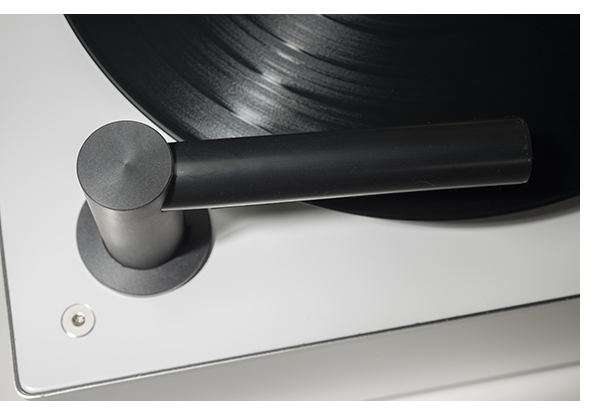 With the scrubbing process done, it’s time to remove the debris-filled solution from the vinyl surface. Merely switch the record cleaner back into clockwise motion, and turn on the vacuum motor switch. Pushing down lightly onto the vacuum wand, it rotates itself into position against the record surface for maximum effectiveness. Once the wand sucks itself into place, there’s quite a good seal against the record surface and no physical intervention is required – just let the record spin a few times. The combination of the vacuum, and the soft cleaning band on the underside of the wand, remove any loosened particles and leave the record surface completely dry. When turned off, the vacuum motor whir subsides, and the spring-loaded vacuum arm pops up off the record, swinging out of the way on its own.
With the scrubbing process done, it’s time to remove the debris-filled solution from the vinyl surface. Merely switch the record cleaner back into clockwise motion, and turn on the vacuum motor switch. Pushing down lightly onto the vacuum wand, it rotates itself into position against the record surface for maximum effectiveness. Once the wand sucks itself into place, there’s quite a good seal against the record surface and no physical intervention is required – just let the record spin a few times. The combination of the vacuum, and the soft cleaning band on the underside of the wand, remove any loosened particles and leave the record surface completely dry. When turned off, the vacuum motor whir subsides, and the spring-loaded vacuum arm pops up off the record, swinging out of the way on its own.
For those vinyl fans who enjoy buying pre-owned records, or who have a lot of old records in their collection, it’s a good idea to purchase a second Okki Nokki vacuum arm. The wands are easy to swap, plus there’s no sense in rubbing old dirt into new vinyl. Save the “clean” arm for your new records, and keep the “dirtier” arm handy for the big jobs.
If a lot of records are shined up in one sitting, the dirty fluid reservoir inside the Okki Nokki may get full. There’s a tube on the rear of the cleaner that facilitates draining should it become necessary. With occasional record cleaner usage, most of the residual fluid will evaporate on its own.
Listening to records before and after cleaning, I find there’s a reduction in unwanted hiss, snaps, and pops, plus some improvement to the overall musical presentation. The Okki Nokki certainly lives up to its design goals.
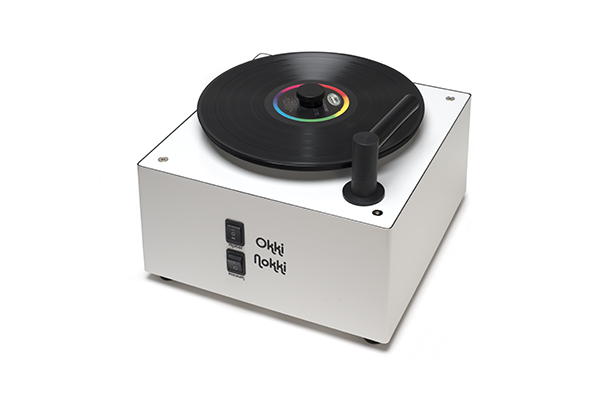 At a price of $499, the Okki Nokki isn’t cheap, but considering its robust build quality, and features, it represents a very worthy investment for the vinyl enthusiast. The Okki Nokki can help preserve your record collection, get the best sound from it, and also save some wear and tear on your precious cartridge. After such a great experience with the Okki Nokki, I purchased the sample unit. I have a lot of records to clean!
At a price of $499, the Okki Nokki isn’t cheap, but considering its robust build quality, and features, it represents a very worthy investment for the vinyl enthusiast. The Okki Nokki can help preserve your record collection, get the best sound from it, and also save some wear and tear on your precious cartridge. After such a great experience with the Okki Nokki, I purchased the sample unit. I have a lot of records to clean!



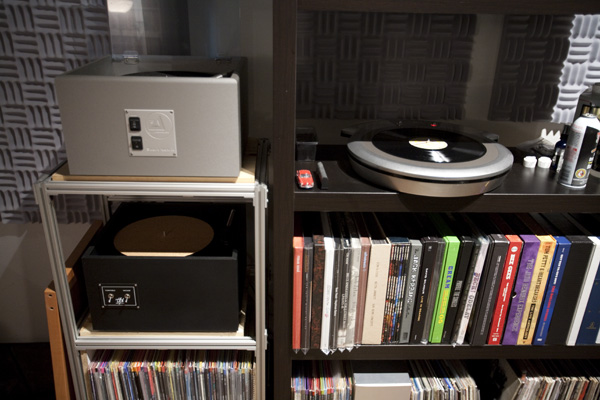 Just drop by any internet forum and you can make enemies instantly by bringing up the subject of record cleaning. LIke every other aspect of the HiFi hobby/obsession, you can do this on a few different levels, and your budget can determine the results. I’ve seen plenty of DIY ways to clean records (with most of them ending in tears, or at least ruined records), but nothing that works consistently or convincingly.
Just drop by any internet forum and you can make enemies instantly by bringing up the subject of record cleaning. LIke every other aspect of the HiFi hobby/obsession, you can do this on a few different levels, and your budget can determine the results. I’ve seen plenty of DIY ways to clean records (with most of them ending in tears, or at least ruined records), but nothing that works consistently or convincingly.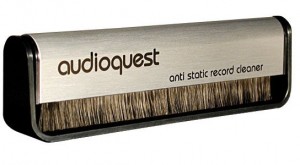
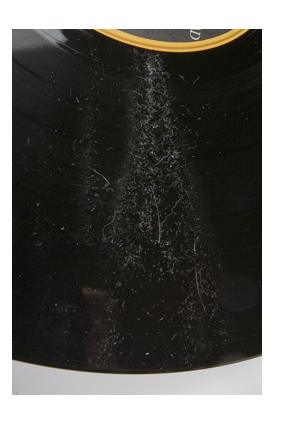 See that gigantic pile of dirt? Grab a handy can of compressed air and blow that right off the record. This will make it that much easier for your RCM to get right at the tough dirt and it cuts down on the crud that sticks to the cleaning pads.
See that gigantic pile of dirt? Grab a handy can of compressed air and blow that right off the record. This will make it that much easier for your RCM to get right at the tough dirt and it cuts down on the crud that sticks to the cleaning pads.